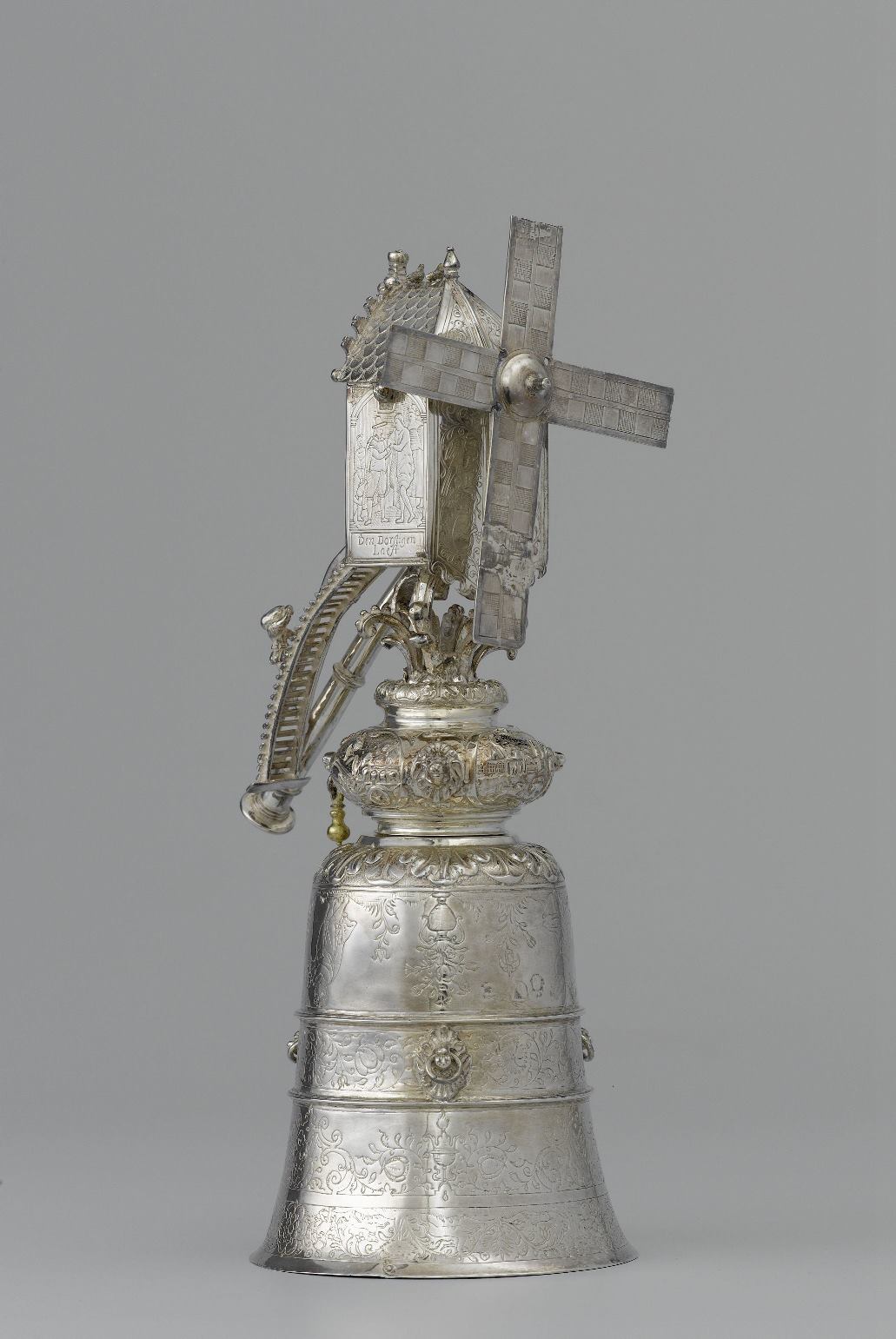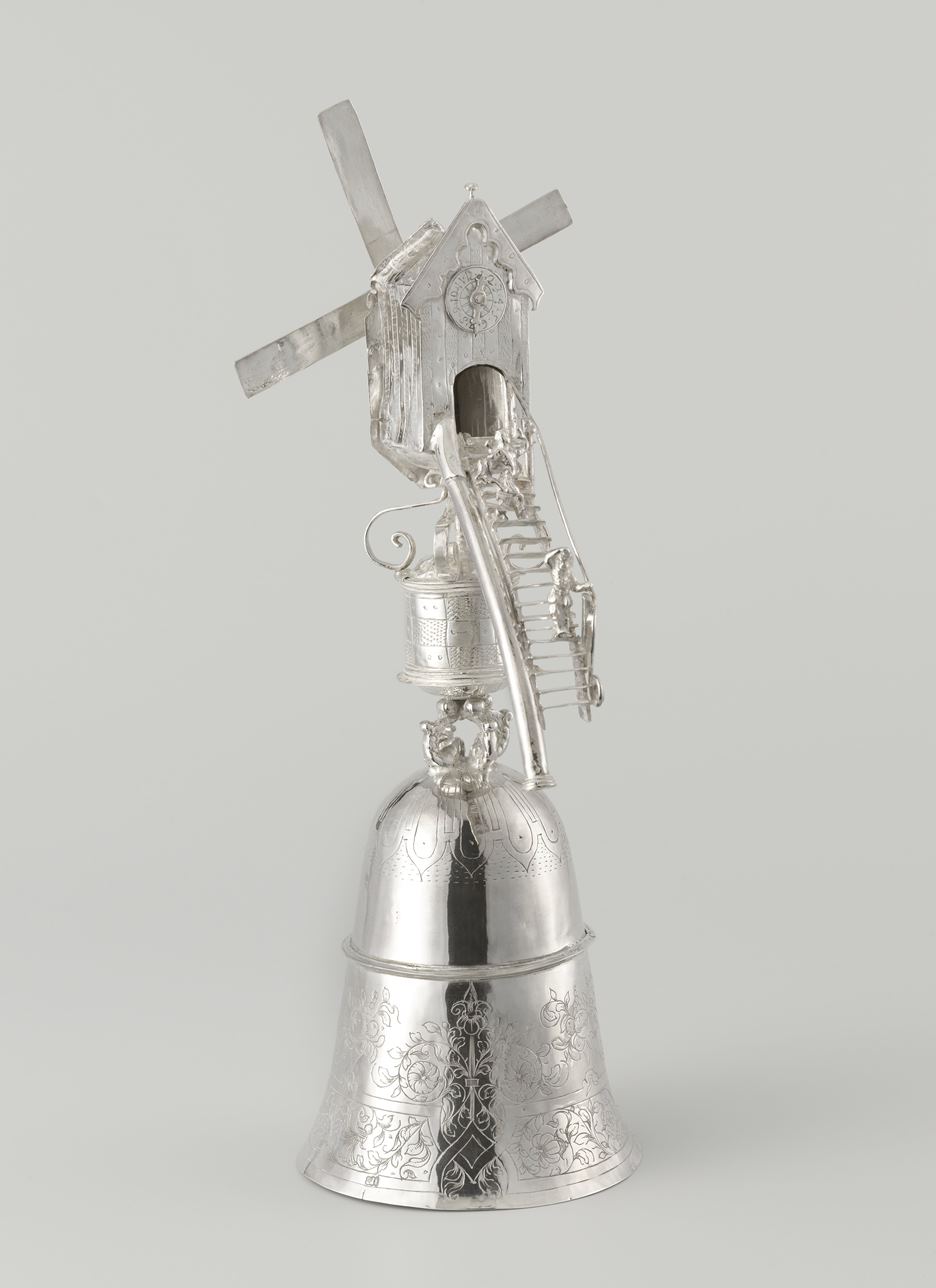What Dutch Drinking Games Were Like In The 17th Century Posted by Sten on Feb 22, 2021 in Culture
The Dutch have quite an intricate relationship with alcohol. From the infamous Dutch courage to the nationwide Dutch celebrations like Koningsdag (King’s Day) or the bevrijdingsfestivals (Liberation Festivals), the Dutch enjoy a glass or two. And what’s better than enjoying drinks doing a drankspelletje (drinking game)? You might think that this is a rather recent mindset – but that’s not true. Even the Dutch from previous centuries found inventive ways to make their drinking more fun. One way that no longer exists is the so-called “mill cup”, the molenbeker. What is that, and how does it work?
How did the drinking game work?
The molenbeker is a cup with a windmolen (windmill) at the bottom – or the top, depending on how you see it. Regardless, the wieken (sails) of the molen could be turned by blowing into the pipe on the side of the beker. So, first you’d fill the beker with an alcoholic beverage. Perhaps some jenever (gin) or wijn (wine). Then, you blow into the pipe, which makes the wieken turn. It also makes a clock-like piece turn on the back of the molen. One arm points at a number – the number at which the arm stops when you stop blowing determines how the game continues.
What that could look like depended entirely on how the rules were decided. Perhaps you blow the pipe and the arm points at 4. This could mean that together with you, four others have to drink. Or perhaps it means you need to drink four cups. The possibilities were endless.
Another interpretation of the mill is that you had to blow on the pipe and finish your drink before the wieken stopped turning. The number on the back perhaps just indicated who had to drink next.
This website was really helpful for more information on this game and the molenbeker. Thank you, Dirk Jan!
When were molenbekers in use?
As you can see, these molenbekers were already in use in the Gouden Eeuw, the 17th century. The piece above is very fancy, and those that could not afford to have such a beautiful beker probably used other ways to create a drankspel, for example with dobbelstenen (dice).
But why a molen? Of course, windmolens have been a typical Dutch icon for a long time now. And back then, windmolens were used for many different purposes. To create new land by draining water, as pumps to organise waterways or more traditionally as a graanmolen (grain mill). It was hard work, and was connected to mannelijkheid (manliness). Paired with mannelijkheid was also the idea that you had to be able to stomach a lot of alcohol. So here, the molen could also be a sign to honor the manly molenaars (millers).
Had you heard of this drankspel before? Are there old drankspellen in your country like this? I want to know, so please tell me in the comments below!

Build vocabulary, practice pronunciation, and more with Transparent Language Online. Available anytime, anywhere, on any device.





